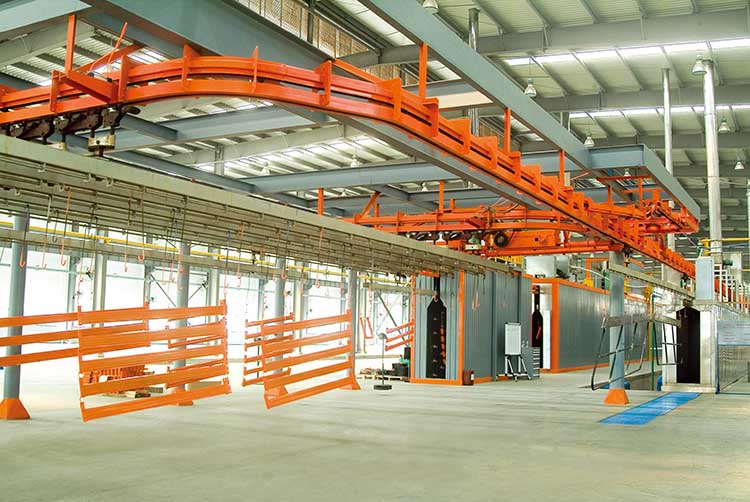burn off oven for paint and powder coatings
Burn off ovens (also called heat cleaning ovens) have become an integral part of the commercial paint and powder coating business home and abroad. These ovens are very safe and effective in removing (sometimes called stripping) paint and powder paint from metal parts, including hooks, racks, steel jigs, fixtures, and hanging trees used to hold parts during paint operations on pass-through paint and powder paint lines.
Why use a burn off oven to remove powder and paint?
Most paints and powder coatings today are done through an electrostatic spraying process. When the paint or powder comes out of the application sprayer, it is negatively charged while the coated part is positively charged, thus ensuring good bonding and reducing the amount of paint or powder required to coat the part. Ultimately, the accumulation of paint and powder paint on the hook reduces electrical contacts that lead to inappropriate paint and wasted paint or powder paint. In addition, painted parts may need to have defective or old paint or powder coats removed in order to be able to be properly repainted.
Historically, dirty paint hangers and hooks were chemically cleaned with acid or corrosive organic chemical solvents. With the introduction of new laws on sanitation, hazardous waste disposal and workplace safety, the use and disposal of these waste solvents has become much more expensive.
Paint and powder coating operations require a safe, fast and effective way to keep paint and powder coating hooks and shelves tidy to maintain product quality and profitability.
Burn off ovens solution
Burn off ovens (also called cleaning furnace) eliminate the use and hazards of toxic chemicals, as well as the cost and environmental risks of their disposal. Processing is simple, safe and pollution-free. Excessive coating and accumulation on hooks, racks, and metal components can be pyrolyzed (evaporated into smoke) at temperatures of 700 to 800°F. The resulting smoke and emissions are inhaled through powerful afterburners at about 1,400 degrees Fahrenheit, incinerating the smoke completely, leaving only invisible, odorless, harmless water vapor and carbon dioxide to be expelled from the exhaust chimney. Only inorganic ash remains on the parts, which can be easily removed by washing with water. The cleaned hooks and racks come out of the oven ready to be returned to service.

Contact: Alice
Phone:
E-mail: alicexu@ecoco-oven.com
Whatsapp:+86 18151380595
Add: Room 122-2, No.3 Business Building Shengyuan Community, Tinghu District, 224001, Yancheng City, Jiangsu, China
We chat
